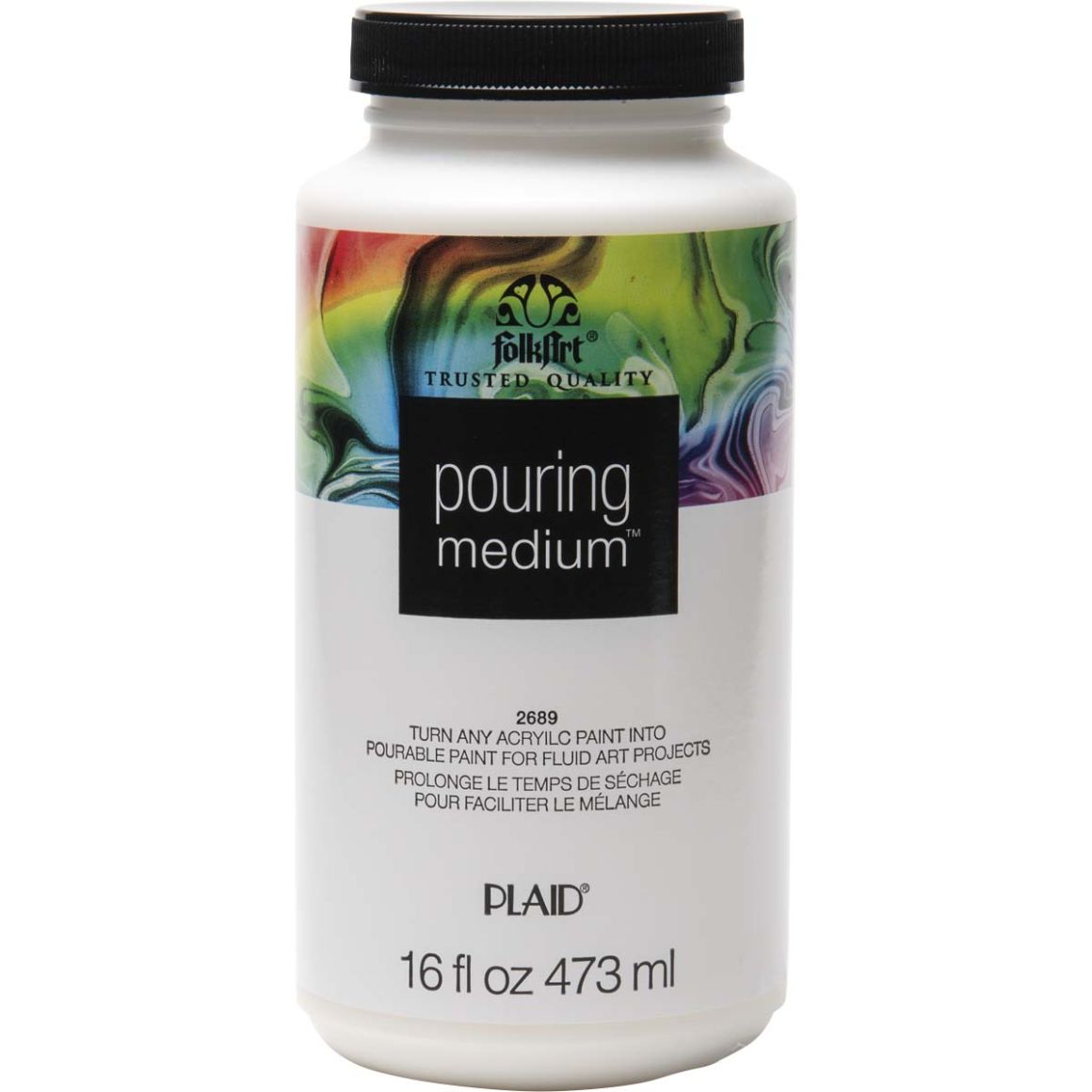FolkArt ® Pouring Medium™, 16 oz. - 2689
FolkArt
$12.99
Detail
FolkArt Pouring Medium is an artist-quality formula that is ideal for use with any FolkArt Acrylic Paint. Create elegant marbled effects by mixing equal parts pouring medium and paint. This unique formula allows you to gently glide colors across your surface for a fun painting experience. Use the pouring method on both light and dark colors with a variety of techniques such as a dirty pour or a direct pour. The end results of this non-toxic, water-based formula display a beautiful satin finish. Cover all your furniture, crafts, canvases, and more with a stunning marble look using the FolkArt Pouring Medium.
- Transform acrylic craft paint into pourable paint to create amazing marbling and swirled effects
- Can be used with multiple pouring techniques, including dirty pours and direct pours
- Can be used with light or dark colors
- Dries to a satin finish
- Water-based, AP-certified, non-toxic
- Made in the USA
- Easy clean-up while wet with soap and water

